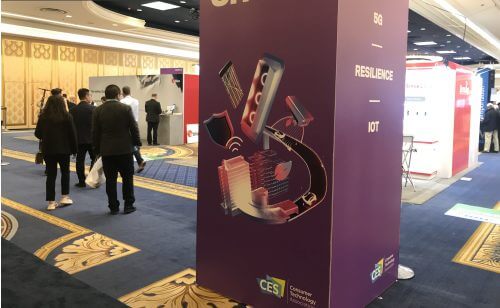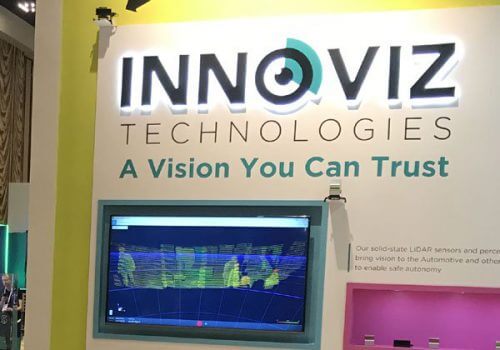Mobileye will build a fleet of autonomous taxis (robotaxis), which will operate in the city of Daegu in South Korea. These cars will map the city on a regular basis to help the municipality take care of the smart city and at the same time allow it to test the field of autonomous cars, including fleet management and operation, mobile intelligence, as well as customer experience from the ride and the other services. In this way, Mobileye will enter the field of MaaS (mobility as a service)

Dozens of Israeli companies in various fields presented at the global technology exhibition CES 2020, which was held at the beginning of the month in Las Vegas. The participants of the exhibition could see blue and white developments in areas such as smart cities, computer vision, big data and artificial intelligence. But one of the most prominent areas is the autonomous vehicle. No fewer than 66 Israeli companies in this field alone presented at the event, at least according to a list published by the Ecomotion association ahead of the event. From their displays and those of companies in the field from other countries, one can get the impression that the task of bringing the autonomous vehicle to mass production is still not close to completion, despite the many talks around the field. We are in an interim period, which does not seem to be short.
The most prominent Israeli company in the field is Mobileye. Although it is no longer owned by Blue and White, after it was purchased by Intel for 15.3 billion dollars, the company still manages an extensive activity in the city where it was born - Jerusalem. Mobileye presented a huge booth at CES with its many developments, including the new sensors it offers.
Nimrod Dor, director of the Asia and Africa region at Mobileye, explained to People and Computers that the new generation of its sensors will make it possible to continuously map the roads and detect changes and hazards, so that the relevant municipality can take care of them. "This feature will be especially important when the cars are autonomous, but it is also important today, when the cities are becoming smart, and transportation is an essential element of the smart city," he said.
In this context, Dor added that the company will establish a fleet of autonomous taxis (robotaxis), which will operate in the city of Daegu in South Korea. These cars will map the city on an ongoing basis and at the same time allow it to test the field of autonomous cars, including fleet management and operation, mobile intelligence, as well as customer experience from the ride and the other services. In this way Mobileye will enter the field of MaaS (mobility as a service).
Preventing accidents through communication from the vehicle to the environment
Another company that presented at the exhibition is Foresight, which deals with computer vision for autonomous and semi-autonomous vehicles. According to Haim Siboni, founder and CEO of the company, "it was established in 2016 and developed a product based on four cameras, which enable two spectroscopic photographs (which measure light frequencies - AB) - one pair in visible light and the other in the infrared range. We fuse the information between the cameras, so that the system can locate anything on the road, any possible obstacle, in any weather, including fog and rain. It also works in situations of full glare, such as direct sunlight, which most optical systems are unable to deal with. We do this as quickly as possible and are approaching 100% detection without false alerts. This year we will perform a proof of capability with customers."
At the same booth, I-Net, a wholly owned subsidiary of Foresight, also presented. Dror Elbaz, operations manager and VP of the company, stated that it focuses on accident prevention through vehicle-to-environment communication (X2V). "In the autonomous era," he said, "it is not enough for a vehicle to have sensors, it will also need to be able to communicate with the environment. We make these capabilities accessible at a certain level, through an application and integration with the existing cellular networks. This is how we are able to prevent side accidents and injury to pedestrians who burst onto the road."
The system was tested a few months ago in Ashdod and Netanya, when for two weeks, 8,500 people tried the application under real conditions. "This allowed us to test our infrastructure - servers and communication, and that everything works well and accurately. Now we are in the commercial phase," said Elbaz.

Israeli technology already installed in BMW vehicles will also be able to track elderly people suffering from dementia
David Oberman, VP at Innovis, presented Innovis One - the new version of the car lidar system that the company developed together with BMW, which will use it in the cars it will produce starting in 2021. BMW is one of the main investors in the company, along with Softbank and Samsung. Lidar, or light radar, is one of the important sensors that will be installed in autonomous cars. It sends pulses of light and receives them back. "Given the speed of light, divide the time it took the beam to return by two and know exactly where each object is located - a person, a truck, a bicycle, etc. - in space," Oberman said.
Lidar is not a new technology, but it has two problems: the price, that those installing it in cars paid more for it than for the car itself, and the moving parts, which cause the sensor to break down within a year. BMW helped Innobiz bring its product to a level suitable for vehicles, after vibration and temperature tests.
Oberman noted that apart from vehicles, "the system is able to help prevent construction accidents. Construction companies in Japan install it on cranes, thus receiving a three-dimensional mapping of the environment and a warning against a situation in which one crane might damage another. Other applications of the system are for the benefit of navigating ships within ports and monitoring the growth of crops in agriculture, which will enable autonomous management of the fields. Another area is to check that elderly people suffering from dementia do not fall out of bed. In fact, it will be possible to use lidar for things that have been thought of and also for applications that have not yet been invented."
More of the topic in Hayadan:
